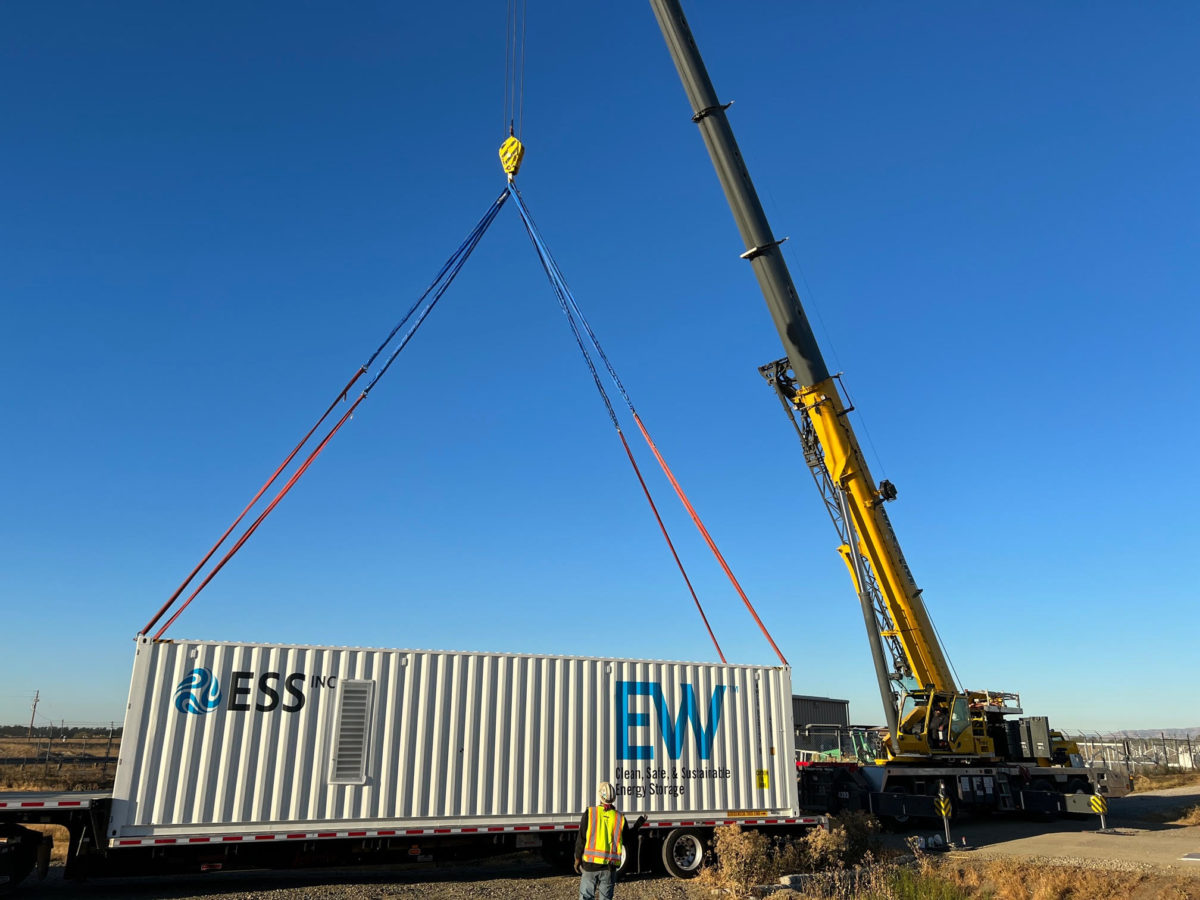With more than 80% of the global lithium-ion battery supply steered towards the electrification of the automotive sector, research of non-lithium-ion battery alternatives provides insight into stretching the availability of battery solutions into both the EV and stationary energy storage market.
An Oregon State University research group has developed a zinc metal anode electrolyte that raises the efficiency of zinc battery cells to nearly 100%, a breakthrough as companies search for non-lithium-ion alternatives to supplement a growing U.S. energy storage market.
In a research report published in the Nature Sustainability journal, a team of 17 OSU researchers in collaboration with HP and an Oregon start-up company, Grotthuss Inc., examined a zinc metal anode capable of storing intermittent daily solar and wind energy on the electric grid.
Relying on a metal that’s safe and abundant, zinc-based batteries are seen as a possible alternative for grid energy storage to widely used lithium-ion batteries, whose production relies on shrinking supplies of rare metals such as cobalt and nickel. Cobalt and nickel are toxic and can contaminate ecosystems and water sources if they leach out of landfills.
“Zinc metal batteries are one of the leading candidate technologies for large-scale energy storage,” said Dr. Xiulei ‘David’ Ji, a professor in OSU’s Department of Chemistry and lead author for the report. “Our new hybrid electrolyte uses water and an ordinary battery solvent, which is non-flammable, cost-effective and of low environmental impact. The electrolyte is made of a dissolved mixture of inexpensive chloride salts, with the primary one being zinc chloride.”
The cost of electricity for energy storage systems using zinc batteries is only competitive with fossil-fuel-produced electricity if the battery has a long dur
During charging, zinc cations in the electrolyte gain electrons and get plated cations of thousands of cycles, Ji said. To date, zinc batteries’ cycle life has been limited based on poor reversibility performance of the cell’s anode. on the anode surface. During discharge, the plated anode gives up electrons for the workload by being dissolved into the electrolyte, said Ji.
Zinc plating and dissolution is an irreversible process in which a portion of electrons cannot be recouped during discharge, creating a problem in an area known as Coulombic efficiency, the report explains. Coulombic efficiency (CE) is a measure of how well electrons are transferred in batteries, the ratio of the total charge extracted from the battery to the charge put in the over a full cycle. For example, lithium batteries can have a CE in excess of 99%.
The new zinc metal anode electrolyte developed by Ji and his team, in collaboration with scientists from the Massachusetts Institute of Technology, Penn State University and the University of California, Riverside, enabled a CE of 99.95%, a fraction of a percent improvement over the CE of traditional lithium batteries.

Dr. Xiulei "David" Ji is a professor in Oregon State University's chemistry department.
“The primary challenge with zinc batteries is that zinc reacts with water in the electrolyte to generate hydrogen gas in what is called a hydrogen evolution reaction,” Ji said. “This parasitic reaction causes a short cycle life and is also a potential safety hazard.”
To remedy the hydrogen evolution reaction, the Oregon State research group’s electrolyte restricts water’s reactivity and nearly shuts down the hydrogen evolution reaction by forming a “passivation layer” on the surface of the anode. A passivation layer is what enabled the initial commercialization of lithium-ion batteries in the 1990s, according to the report.
Ji credits Oregon State colleague Dr. Chong Fang for uncovering the electrolyte’s atomic structure by using advanced spectroscopy, and Alex Greaney at UC Riverside, for determining the passivation mechanism, respectively.
“Also, it is worth noting that the efficiency we measured is under harsh conditions that do not mask any damage caused by the hydrogen evolution reaction,” said Ji. “The breakthrough reported here heralds the near-future commercialization of the zinc metal batteries for large-scale grid storage.”
In addition to HP and Grotthuss, the research group was supported by the National Science Foundation and the U.S. Department of Energy.
Grotthuss is a spin-off corporation formed by Ji to commercialize the zinc metal anode technology and is currently seeking a full-time chief executive officer, according to social media. In April 2020, the company received a $200,000 grant from the Solid State and Materials Chemistry program in the Division of Materials Research at the National Science Foundation to further research the technology for use in the energy storage market.
In November 2022, the U.S. Department of Energy awarded $3 million to Ji to lead the development of a new, high-energy-density battery that does not rely on rare elements.
This content is protected by copyright and may not be reused. If you want to cooperate with us and would like to reuse some of our content, please contact: editors@pv-magazine.com.









By submitting this form you agree to pv magazine using your data for the purposes of publishing your comment.
Your personal data will only be disclosed or otherwise transmitted to third parties for the purposes of spam filtering or if this is necessary for technical maintenance of the website. Any other transfer to third parties will not take place unless this is justified on the basis of applicable data protection regulations or if pv magazine is legally obliged to do so.
You may revoke this consent at any time with effect for the future, in which case your personal data will be deleted immediately. Otherwise, your data will be deleted if pv magazine has processed your request or the purpose of data storage is fulfilled.
Further information on data privacy can be found in our Data Protection Policy.